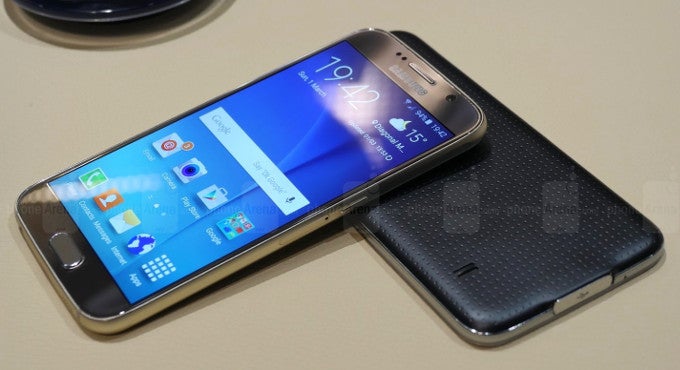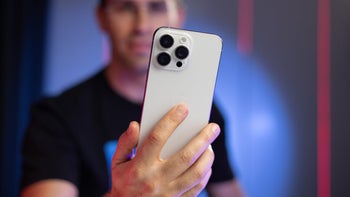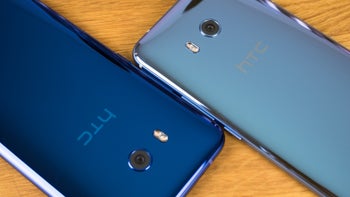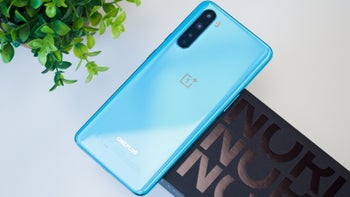Samsung Galaxy S6 vs Galaxy S5: should you upgrade?

A design overhaul
QHD and color accuracy
Samsung isn't new to the QHD game – its Note 4 and Note Edge phablets both employed the super-crisp resolution. However, its "mainstream" flagship – the Galaxy S5 is still stuck to 1080 x 1960. Now, the difference between the densities on the two screens will possibly remain unnoticed by most, if not all users – the S5 has a 432 PPI ratio, whereas the S6 sports a 577 PPI one. Many would argue that a density of pixels that the human eye can't even discern puts an unneeded strain on hardware and battery life and is a redundant upgrade, however, some say that they enjoy the sharper looks and having 4K be native resolution for the phone.
The Galaxy S6, however, has another notable upgrade to its Super AMOLED display – it now has a much more accurate color reproduction, just like the Note 4 and Note Edge before it did. Consumers used to be polarized by AMOLED screens and their overly saturated, super punchy, and inaccurate colors, however, for the past year, Sammy has been working to add a more natural mode to its displays. It included a "Basic" setting in its options menu, which tamed the colors, and made them more accurate. Of course, fans of the AMOLED punch still have access to other modes, which deliver just that.
A thinned-down TouchWiz with themes
While we wouldn't really consider a themes option to be a selling point, it's still nice to have it. Especially in an interface like TouchWiz, which has become a bit stale with its looks throughout the years. Users who don't mind Sammy's UI will feel right at home from the get-go, while others will have the choice to customize it thanks to a new Themes app.
TW has also been getting some bad rep due to being brim-packed with features and processes, which a single user would most of the time not need, or even know of. As a result, the UI has been known to exhibit stutters and lags and consumers found this to be too high of a price to pay for features that they barely use. Well, Sammy decided to listen, and has now slimmed down and simplified the interface in strides to deliver a snappier, more responsive feel.
Next-generation processor and memory
Samsung decided to not use Qualcomm's Snapdragon line for its latest flagship and will instead rely solely on its own home made octa-core 64-bit solution, built on a 14 nm process, which should provide speedier, more power-efficient performance. Speaking of speedier, the storage unit of the new Galaxy S6 employs UFC 2.0 technology, which Samsung claims could be up to 2.7 times faster than the eMMC 5.0, which was used up until now. This is pretty much SSD territory in terms of speed, which is pretty exciting.
On the flip side, the Galaxy S6 does not offer internal memory expansion via microSD, but it does come in three different variants – 32 GB, 64 GB, and 128 GB.
Camera
The new camera still sports a 16 MP sensor, though its aperture has been widened to F1.9, which means more light, shallower depth of field, and faster shots, according to Samsung. Still, the Galaxy S5's camera is quite the impressive piece of mobile tech and we are yet to write it off as obsolete.
Battery
As far as battery goes, the Galaxy S6 sports a smaller, 2,550 mAh juicer, which may be compensated by the more energy-efficient processor, but will still have to push a QHD display. So, whether or not it will provide a better battery life than the Galaxy S5's 2,800 mAh power box, is still up in the air.
The Galaxy S6 does, however, finally bring wireless charging to Sammy's flagships. It supports both PMA and WPC standards, making for a truly universal charging experience.
Fingerprint sensor
The fingerprint scanner hasn't really been the most popular feature on Sammy's previous devices – it required the user to swipe their finger across the sensor, which often introduced problems with proper detection, and was generally uncomfortable to use. Well, Samsung has heard all the users' woes and has went the "touch to scan" way, which should finally make the gadget much more responsive and thus – useful.

Conclusion
And there we go – the Galaxy S6 has notable improvements in many of its main aspects. A more premium look and feel, and a snappy, fast performance are surely enough to get users drooling over the new flagship. Add a sharper, and more color-accurate display, and a camera, which already improves upon a pretty impressive snapper, and you've got a very well-rounded 2015 flagship. If you are thinking about upgrading, and have the opportunity to do so, we'd say the Galaxy S6 is worth taking the plunge.













Things that are NOT allowed: